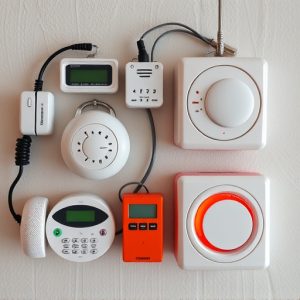Smartphone-Connected SOS Alarms: Distance Range Comparison for Personal Safety
Emergency SOS alarms with smartphone connectivity offer individuals a quick and reliable way to summ…….
Emergency SOS alarms with smartphone connectivity offer individuals a quick and reliable way to summon help, with distance ranges varying from 30-50 meters indoors to up to 500 meters outdoors. Choosing the right device depends on environmental factors like urban vs. rural settings and technological aspects such as communication methods. A Personal Alarm Distance Range Comparison is essential for selecting a device that ensures peace of mind and swift response during emergencies, with options tailored to specific needs and surroundings.
In today’s world, personal safety is paramount. Emergency SOS alarms with smartphone connectivity offer a revolutionary way to enhance your security. This comprehensive guide delves into the basics of these life-saving devices, highlighting how smartphone integration transforms personal safety. We explore critical factors influencing the effective distance range of these alarms and provide an in-depth comparison of popular devices, aiding you in making informed choices for your peace of mind.
- Understanding Emergency SOS Alarms: The Basics
- Smartphone Connectivity: A Game-Changer in Personal Safety
- Evaluating Distance Range: Factors to Consider
- Comparing Popular Emergency SOS Alarm Devices
Understanding Emergency SOS Alarms: The Basics
Emergency SOS alarms have become a vital personal safety tool in today’s digital era. At their core, these devices are designed to provide individuals with a quick and reliable means of summoning help during urgent situations. When activated, they transmit a signal that can alert emergency services and loved ones over a specific distance range. Understanding the basics of how these alarms work is crucial for making informed decisions when choosing the right solution for personal safety needs.
The range at which an Emergency SOS alarm can operate varies significantly between different models. This range, often measured in meters or miles, determines the area of coverage and accessibility during emergencies. When comparing Personal Alarm devices, considering the distance range is essential. Some alarms offer a relatively short range, suitable for immediate personal spaces, while others boast extended ranges that allow for help to be summoned from farther distances. This distinction ensures users have peace of mind knowing they can activate their alarm and be assisted promptly within the specified radius.
Smartphone Connectivity: A Game-Changer in Personal Safety
Smartphone connectivity has revolutionized personal safety, transforming traditional emergency SOS alarms into a powerful and accessible tool for individuals worldwide. With just a tap on a smartphone app, users can now activate an alarm that not only alerts nearby responders but also enables long-distance communication with emergency services. This real-time connectivity is a significant upgrade from previous systems, offering a personal alarm with an extended distance range.
Unlike limited-range devices, smartphone-integrated alarms allow users to access help from virtually anywhere, providing peace of mind. A simple app connection can bridge the gap between the user and emergency personnel, ensuring swift assistance, especially in remote or challenging-to-reach areas. This innovative approach to personal safety has led to a profound shift in how individuals perceive their vulnerability, empowering them with a tool that offers both immediate alarm capabilities and the convenience of mobile connectivity.
Evaluating Distance Range: Factors to Consider
When evaluating the distance range of personal alarm devices with smartphone connectivity, several factors come into play. Firstly, consider the environment in which the device will be used. Urban areas with tall buildings and dense populations might reflect signals differently than open countryside or remote regions. Signal strength and stability can vary significantly based on these variables, affecting the effective range of your SOS alarm.
Another crucial aspect is the technology used for communication. Different personal alarms employ various connectivity methods, such as Bluetooth, Wi-Fi, or cellular networks (like GSM or 4G LTE). Each has its strengths and limitations in terms of distance coverage. For instance, while Bluetooth offers a shorter range, it doesn’t require a data plan and can be more reliable indoors. Cellular networks provide broader reach but depend on signal availability from nearby towers, which might not exist in remote locations. Personal Alarm Distance Range Comparison guides users to select the most suitable device based on their specific needs and surroundings.
Comparing Popular Emergency SOS Alarm Devices
When comparing popular emergency SOS alarm devices, one key factor is the personal alarm distance range. This determines how far away assistance can be summoned, crucial for scenarios where help might be needed in remote areas or during outdoor activities. Devices like the SmartSafe offer a wide range of up to 500 meters, making it ideal for hiking and camping trips. In contrast, some smaller personal alarms may have a range as low as 30-50 meters, suitable more for indoor use or immediate surroundings.
Another aspect is smartphone connectivity. Many modern alarms sync seamlessly with your mobile device via Bluetooth or Wi-Fi, allowing you to trigger an alert from your phone even when out of range. Features like automated emergency contacts and location sharing add significant peace of mind. For instance, the LifeAlert system not only boasts a substantial 200-meter range but also provides real-time GPS tracking through its companion app, ensuring swift response during emergencies.
Emergency SOS alarms with smartphone connectivity have revolutionized personal safety, offering a peace of mind that was previously unattainable. By understanding the basics and evaluating factors like distance range, individuals can make informed decisions when choosing the right device for their needs. A comprehensive comparison of popular devices allows users to select the best option, ensuring they’re prepared in case of emergencies. With these advanced tools, navigating potential dangers becomes more manageable, providing a sense of security in our modern world.


